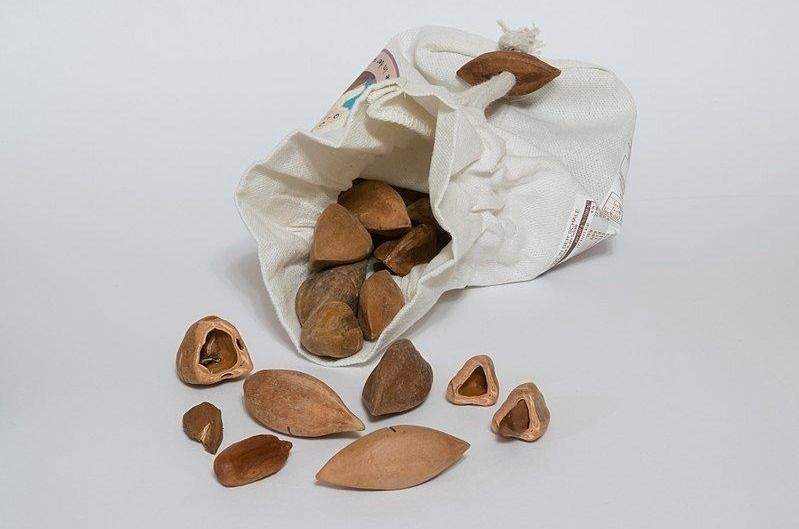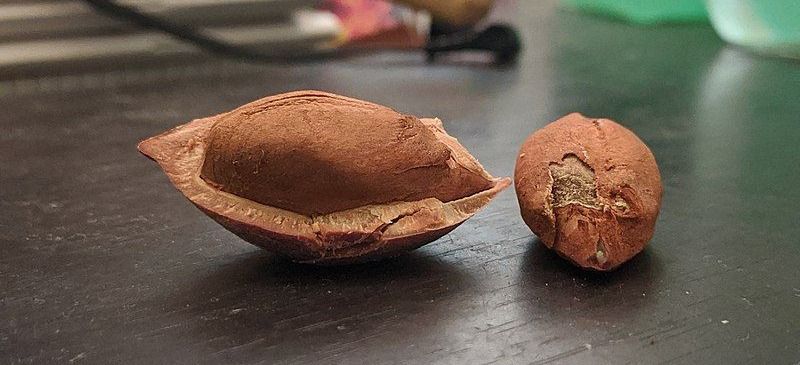Pili Nuts: Here's Why This Superfood is So Expensive
Originating from Southeast Asia's vibrant tropical regions, the pili nut is globally known for its hard-to-crack shell. Yet, with prices reaching up to $40 per pound, it prompts a question – does the effort to crack it open justify the rich rewards hidden within?

Hailing from the lush tropical landscapes of Southeast Asia, the pili nut (pronounced 'pee-lee') is renowned globally as a nut that poses a tough challenge to crack open.
Behind its formidable shell, lies a treasure trove of health benefits, concealed within its teardrop-shaped casing. This has led some aficionados to proclaim it as the zenith of nutritious nuts.
However, with a price tag that can soar as high as $40 per pound, a question arises – does the demanding endeavor of unlocking its hard exterior truly match up to the bounties nestled within?
What is Pili Nuts?

Pili nuts are the edible seeds of the pili tree, scientifically known as Canarium ovatum, which is a tropical tree native to the Philippines and belongs to the genus Canarium, within the family Burseraceae.
Among around 600 species in this family, Canarium ovatum is particularly valued for its nuts, which are commercially cultivated in the Philippines.
Although sometimes referred to as "Java almond," this term is a misnomer that inaccurately groups multiple Canarium species together.
The pili nut is unique to its specific species and is cherished for its rich, buttery flavor and nutritional value, setting it apart from other nuts within and outside its genus.
History and Origin of Pili Nuts
The pili nut has a long-standing history in the Philippines where it is native and was once considered a well-kept secret, enjoyed by both locals and visitors.
Although the exact time of its initial cultivation is unclear, it is believed that ancient inhabitants of the Philippines began harvesting pili nuts from wild trees as part of their diet.
Over time, the cultivation of pili nuts expanded, particularly in the Bicol region of the Philippines, but they have remained closely associated with Filipino culture and cuisine, showcasing a blend of historical significance and modern appreciation.
Why Are Pili Nuts So Expensive?
The high cost of pili nuts is attributed to few factors:
Challenges of Wild Harvesting
The steep price of pili nuts, mainly harvested in Luzon's Bicol Region, stems from their wild harvesting tradition, a laborious and risky endeavor, albeit yielding pesticide-free, mineral-rich nuts.
Harvesting entails manually climbing trees, sometimes reaching 20 meters, to shake branches and release the drupes housing the nuts, demanding both skill and caution.
Despite their resilience to adverse soil conditions and weather, pili trees have a long maturation period of five to six years, with a restricted harvest season from May to October.
These factors, coupled with the nuts' tough shells, hinder commercial export, rendering pili nuts a scarce, pricey treat, occasionally reaching up to $40 per pound.
The Challenge of Cracking Hard Pili Shells
The tough shells of pili nuts make machine cracking a challenge, often leading to crushed kernels.
Hence, the preferred method is manual de-shelling, or 'pagtilad,' practiced by the Bicolanos from the Bicol region.
Using a sharp tool called a bolo, much like a machete, farmers carefully strike the nut to crack it open, ensuring the kernel stays intact.
A skilled de-sheller, or 'paratilad,' can quickly open the shells, managing to produce up to 100 kilograms of pili nuts in a day, showcasing a blend of skill and tradition.
Health Benefit of Consuming Pili Nuts
Packed with essential minerals like magnesium, potassium, and calcium, pili nuts also boast a rich content of omega fatty acids and protein, promoting heart health and aiding cholesterol balance.
They can be processed into a healthful oil, considered a healthier counterpart to olive oil. Containing all eight essential amino acids, they support weight management by fostering a sense of fullness.
Additionally, the Vitamin E and magnesium in pili nuts enhance skin, hair health, and promote restful sleep, making them a nutritional fortress encased in a hard shell.
Barriers to Pili Nuts' Global Recognition
The rising demand for pili nuts in places like the US, Hong Kong, and Taiwan is hindered by cultivation challenges.
Pili trees thrive in specific soil conditions and are adapted to the tropical climate of the Philippines.
These specific requirements could pose challenges for cultivation in different regions and the spoilage susceptibility of the fruit in the Philippines' tropical climate are major obstacles.
Currently, the Philippines is the only commercial exporter of pili nuts, with just a single farm leading in export and cultivation efforts, despite having six producing regions. This scenario limits the global accessibility and recognition of pili nuts.
Fair Labor Fuels Community Support
Bringing pili nuts to market is a labor-intensive endeavor. Every phase of the pili harvest involves community members, creating a cycle of support that benefits the entire community.
The pricing of the pili nuts embodies dedication to backing these Philippine communities who depend on this industry for their livelihood, steering clear of unethical practices for a cheaper product.
The price mirrors the fair labor principles, nurturing local communities engaged in every stage of the pili nut harvest journey.
Flavor Profile
The flavor profile of pili nuts is described as rich and buttery with a hint of sweetness and bitterness.
When raw, they resemble the flavor of roasted pumpkin seeds or pine nuts, but upon roasting, they acquire a nutty flavor and waxy texture, akin to a blend of hazelnut, almond, and coconut.
Their texture is compared to macadamia nuts, being slightly crunchy, but they become chewier and creamier when roasted, often described as melting in the mouth.
In Conclusion
Upon initial observation, pili nuts may seem pricey, but their nutritional potency offers great value.
Rich in fats, low in carbs, and brimming with essential nutrients, a small serving of pili nuts provides substantial nourishment.
They embody a luxurious and nutritious indulgence, deserving appreciation for their quality over quantity.
Today, pili nuts are celebrated not just for their exquisite taste but also their nutritional richness, echoing a tradition that dates back to the ancient inhabitants of the Philippines.


